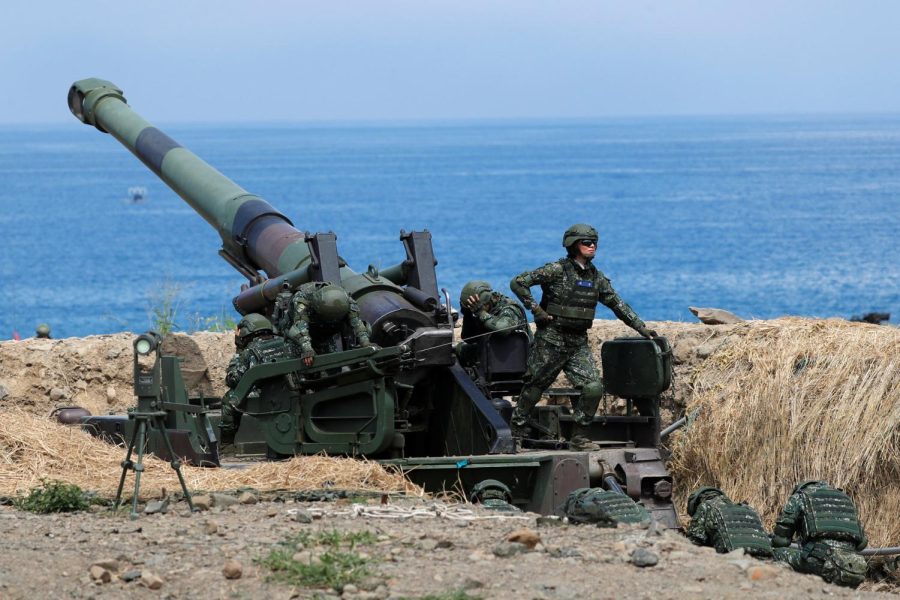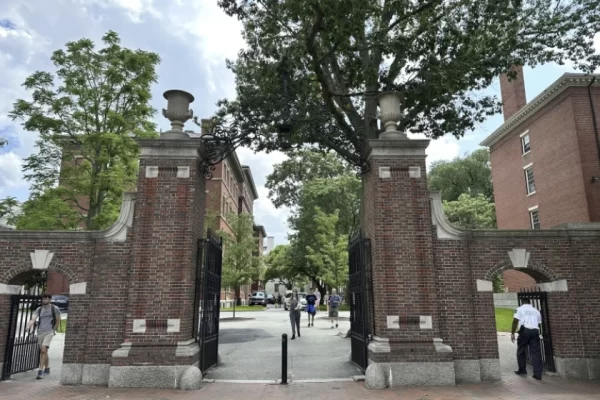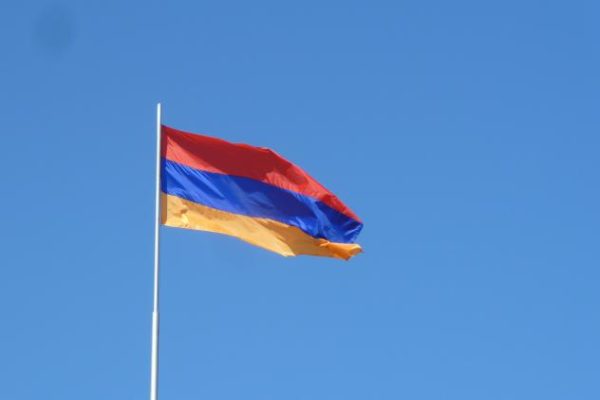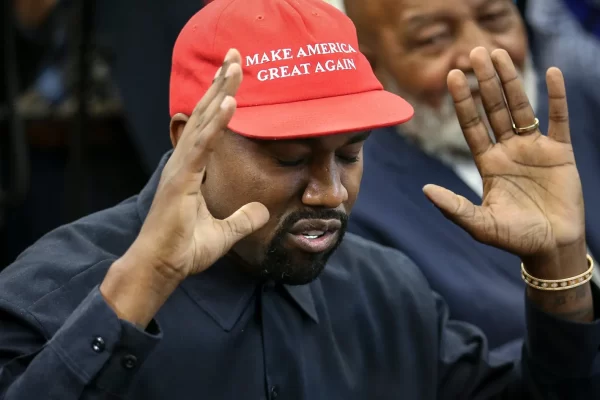What is Required for Peace to Prevail across the Taiwan Strait
The Russian invasion of Ukraine has taught us several geopolitical truths—that authoritarian nations, particularly those in self-perceived decline, choose to provoke conflict; that the best way to avoid conflict is to prevent it; and that the world is organized in such a way that dominoes fall in a continuum: if Putin had been successful in his mission to reunite Ukraine with the Russian Federation, he would not have stopped in Kyiv—he would have continued on to other former Soviet socialist republics. For those who believe that we should have more acutely responded to this crisis, and even for those who do not, it is important to direct our attention to another precarious situation—similar but also vastly different—on the other side of the world.
The Taiwan Strait, only 180 kilometers wide, separates the Chinese mainland from the island of Taiwan. There exist two governments on each side of the strait that officially claim all of the mainland and Taiwan as their territory—the People’s Republic of China (P.R.C.) in Beijing and the Republic of China (R.O.C.) in Taipei. In 1911, the Xinhai Revolution overthrew centuries of hereditary monarchy in China and established in its place a republican government—the Republic of China. Only two decades later, civil war broke out on the mainland as insurgents, the Chinese Communist Party, sought to overthrow the Nationalist (Kuomintang) government, which ruled over the mainland. Faced with mounting crises of battling warlords and a brutal Japanese invasion, the communists were able to force the retreat of Kuomintang leadership until their evacuation to Taiwan, which had been under Japanese control for decades. The Republic of China’s territory had shrunk to just Taiwan and several islands off the coast of the mainland—Kinmen and Matsu among the more notable. For many decades most western nations refused to recognize the Beijing-based P.R.C. as the legitimate representative of the Chinese people and instead remained diplomatically loyal to the Taipei-based R.O.C. As time passed, however, a large-scale shift in international recognition favored the P.R.C. government as it became increasingly obvious that Chiang Kai-shek’s exiled troops would no longer be able to regain control of the mainland. The United Nations welcomed representatives from the P.R.C. in 1971, and Washington established official relations with Beijing in 1979. Today, Taipei has only 13 U.N.-recognized diplomatic allies.
What is unique about this geopolitical situation is that Taiwan holds far more international clout than the official numbers convey. The U.S. State Department, like many other nations, maintains a de facto embassy and consulate on the island which it calls the American Institute in Taiwan in order to avoid provoking Beijing, and in return, the R.O.C. Ministry of Foreign Affairs sponsors innocuously named “economic and cultural exchange offices” abroad which help foreigners obtain R.O.C. visas and assist R.O.C. nationals currently overseas.
Even though a peace treaty to the Chinese Civil War has never been officially signed, the current status quo of two separate governments controlling the mainland and Taiwan has been sustained since 1949. In 1992, relations significantly improved when Beijing and Taipei agreed in the “1992 Consensus” that both sides recognized that only one China existed but disagreed on which government was the legitimate representative of the Chinese people. In 2005, members of the Kuomintang, whose party platform advocates for eventual reunification with the mainland, made a series of official visits to the mainland which significantly thawed cross-strait relations. In 2015, the president of the R.O.C., Ma Ying-jeou, held a summit with the president of the P.R.C., Xi Jinping. Taiwan’s democratization and China’s economic liberalization synchronized as more Taiwanese and Chinese chose to travel to the other side of the strait, trade numbers rose and war seemed significantly less likely.
Recent years have proved increasingly difficult for Beijing and Taipei to engage in dialogue, let alone advance in far-reaching peace talks. The election of Tsai Ing-wen, a member of the pro-independence Democratic Progressive party, in 2016 prompted cross-strait communication to completely shut off as the mainland continued to condemn what it described as “subversive activities by Taiwanese independence secessionists.” The main scenario in which Beijing has pledged to reunify the region by force is if the Taipei government declares independence as an entity separate from the Republic of China—like an independent Taiwanese state.
In the newest developments, Beijing’s rhetoric has grown more forceful as it attempts to isolate Taipei on the international stage and threatens military action in response to what it deems “provocative acts.” One such example of this was demonstrated by U.S. Speaker of the House Nancy Pelosi’s visit to Taipei in August, which resulted in Beijing’s total denunciation, a reiteration that it would respond in a way never seen before (it did not) and videos released on social media channels which appeared to show Chinese troops mobilizing to invade Taiwan. Incursions into Taiwan’s Air Defense Identification Zone—its airspace—by Beijing’s military have significantly increased since the beginning of 2020, with potentially violent consequences that include catastrophic miscalculation. New technologically advanced Chinese drones present threats to Taiwan’s military capabilities—just last week Taipei ordered the shoot-down of one such drone near Kinmen Island.
Unlike the Russia-Ukraine crisis, war has not yet been sparked across the Taiwan Strait. For this to remain true into the future, two things are necessary: Taipei must remain steadfast to its identity as the Republic of China, and Washington must continue to supply Taipei with military equipment. Should an invasion occur even if the above two conditions are met, Washington must directly intervene in defense of the Taiwanese people.
Supporters of “Taiwanese independence” often claim that Taiwan is not a true nation until its name synchronizes better with the geographic area under the control of its government—in other words, when it ceases self-reference as the R.O.C. They are gravely wrong when we consider that the Republic of China is functionally independent in every conceivable way—it has its own president, legislature, military, currency, national history and high-level relations with other sovereign nations, including an airtight friendship with its most powerful ally, the United States. There would be no practical benefit to a declaration of independence as a Taiwanese republic—the only imminent consequence would be war in which Taipei would be at a distinct disadvantage compared to Beijing’s nearly three million active and reserve military personnel. In addition, the Republic of China’s de facto territory encompasses more than the island of Taiwan—residents of Kinmen, Matsu, Penghu and other surrounding islands certainly consider themselves R.O.C. nationals but not Taiwanese. Its de jure territory, stipulated in the R.O.C. Constitution, is even broader—including all of the mainland, Mongolia, the South China Sea and significant chunks of Russia, India, Myanmar, Afghanistan, Tajikistan and other nations. (Taiwan is only one of the R.O.C.’s official provinces.) Notably, the government which operates in Taipei is the same one that held control over the mainland for nearly four decades in the 20th century. The people of the R.O.C. have already seen great success when it comes to balancing a unique Taiwanese identity with Chinese roots, especially after increasing cultural liberalization promoted by the advent of democracy in Taipei. Only under the pretext of the R.O.C. will Beijing be willing to productively negotiate with Taipei and map out the road to lasting peace in the region.
Another point of contention is the expansive number of arms sales that Washington conducts with Taipei. Beginning with Jimmy Carter’s presidency, the United States has consistently sold Taiwan high-level American military equipment that it needs to mount a proper defense against any potential attack. The Taiwan Relations Act of 1979, meant to help navigate Taiwan-U.S. relations after the severance of official diplomatic ties, stipulates that the U.S. must provide Taiwan with the appropriate means to defend itself. The Wall Street Journal reported earlier this month that equipment approved to be sold to Taipei includes anti ship missiles, warplane missiles and additional support for a surveillance radar. Not only is Washington bound to a commitment to provide Taipei with weapons of a defensive character, but minimization of direct U.S. involvement also begins with ensuring that Taipei is as equipped as it can be against a potential military advance by Beijing.
It is likely that peace secured through both non-provocation and strength will be enough to maintain the status quo into the next decade. If it fails, it is imminently plausible that Taipei—despite the advanced nature of the R.O.C. Armed Forces—will be unable to adequately withstand the onslaught of the People’s Liberation Army, especially its overwhelming manpower. China’s economy is experiencing unprecedented decline, especially with the brunt of COVID lockdowns still hampering a return to normalcy, and Beijing’s territorial ambitions extend beyond Taipei to the South China Sea, where it is erecting artificial islands in an attempt to solidify its reach. It is in this situation of unprovoked invasion and in this situation only that the United States must launch a direct military intervention.
We must first examine why. Taiwan is many things: an epitome of democracy’s universal application, a testament to the strong will of a people under constant threat and a scientific and technological powerhouse. It is for all these reasons that its survival is existentially important to the United States and the world. Isolationists at home like to argue that democracy is a way of government only accepted in certain nations and that it is best to leave the rest of the world the way it is. This mindset not only encourages the expansion of authoritarianism but also ignores the fact that the problems of the world do not stop at our doorstep when we ignore them. The people of the R.O.C.—who robustly disagree with each other politically—have built for themselves a flourishing and free way of life that incorporates elections, respects basic liberties and promotes social acceptance. Taiwan also immeasurably contributes to the industries of the world—it produces nearly two-thirds of the world’s semiconductors, including nearly nine of every ten advanced versions. As we saw during the global chip shortage, semiconductors are essential to the car, healthcare and computer industries. Taiwan’s bustling tourist sphere, beginning to regain steam after the loosening of Covid restrictions, gives foreigners an opportunity to view historic Chinese artifacts in the National Palace Museum, explore former battlefields on Kinmen and Lieyu and enjoy a traditional Taiwanese railroad bento box aboard a high-speed rail train.
In an interview with CBS, U.S. President Joe Biden answered in the affirmative when asked if “U.S. forces, U.S. men and women, would defend Taiwan in the event of a Chinese invasion.” In an era of increasingly brazen aggression from Beijing, his reassurance is important in securing the future of the R.O.C. and its 23 million people.
Many foreign policy analysts are looking within and asking if the United States has learned lessons from the Russian invasion of Ukraine. We will only prove that we have when we do everything in our power to prevent conflict between Beijing and Taipei—including by maintaining the R.O.C.’s status quo and by providing Taipei with defense capabilities—but remain ready to respond to unprovoked aggression.

Grade: 11
Years on Staff: 3
Why are you writing for the Flintridge Press?
In the leadup to another contentious presidential election, the challenges...












